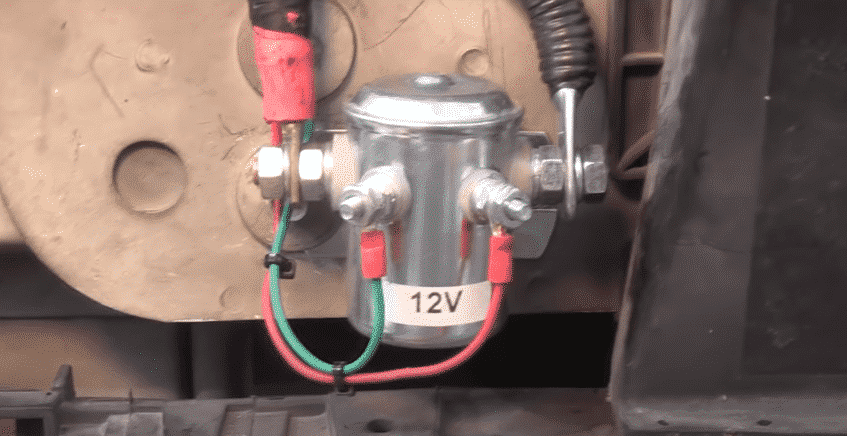
Having a good battery is essential if you are deciding on taking an RV with yourself on a trip. This is because it helps in powering up all your electrical appliances. So that you can stay relaxed and at comfort. Additionally, some people also use isolators or solenoids on their batteries. These are used to divide the electrical current coming from the main power source into multiple branches.
In short, you can use this to power up multiple batteries and charge them instead of just charging one at a time. These also allow users to arrange their batteries in whatever order they want instead of lining them up in parallel. While this can be great, Some RV users might end up running into a problem with their Solenoid. This is why we will be providing you with some common issues that you might get and how you can fix them.
RV Solenoid Problems
- Solenoid Heating Up
If you have a solenoid in your RV then you might notice that it is sometimes warm. This is usually normal when power is flowing through it. Although, sometimes the solenoid starts to heat up a little too much. In this case, you should first take a look at the model of your vehicle as well as what type of solenoid you are using. This helps you in identifying what the problem might be. While the solenoid heating up can be normal under certain conditions, it might end up damaging your vehicle in others.
If your vehicle is really power hungry and has a lot of batteries powering it up then there is no problem with the solenoid heating up. Additionally, check the size of your solenoid. Only the models labeled as ‘BigBoy’ can handle larger vehicles and power up their batteries safely. If you have any other model then it is recommended that you check all the wiring. There might be some loose wires that might be stopping the current from flowing.
Tightening up these wires firmly should stop your solenoid from overheating. Lastly, some people might consider taking out the solenoid from this vehicle. It is highly recommended that you do not do this because most vehicles cannot power up without a solenoid. This is because it is essential in order to draw power from a generator and then charge up the batteries.
- Dead Cells in Battery
One thing that you should take a look at regularly is your vehicle’s batteries. If there is not enough water in them then they will stop charging up. The solenoid on the other hand will keep on supplying the battery with current and one of these equipment’s might get damaged. Additionally, battery banks on your RV are powered up by small cells. These can die out with time and need to be replaced. Talking abo0ut this, if your battery has dead cells then it will start to draw large amounts of current in it.
This results in the batteries heating up and damaging components attached to them. Considering this, you should keep all the batteries in your vehicle properly maintained. The cells and water levels in them need to be check at least once a week. Additionally, you should also make sure that you clean up the batteries as well, this is because small layers of oxide can form on the top of their anodes and cathodes. This can lead to corrosion and stop your battery from both receiving and giving out power.
- Faulty Solenoid
Sometimes you might notice that the solenoids in your vehicle have stopped functioning completely. You can confirm this by taking them out and then attaching them to a terminal. Afterward, use a voltmeter to take a reading of the current coming out of this device. If you notice that the current is fluctuating then this indicates that your solenoid has started to die out.
However, if there is no current coming from the solenoid then it is completely damaged. This is completely normal and in both these cases, you should get the solenoid replaced with a new one. While purchasing one, make sure that you select the size of it depending on your vehicle. You can also check online to find a list of solenoids available for the model of vehicle you are driving.

